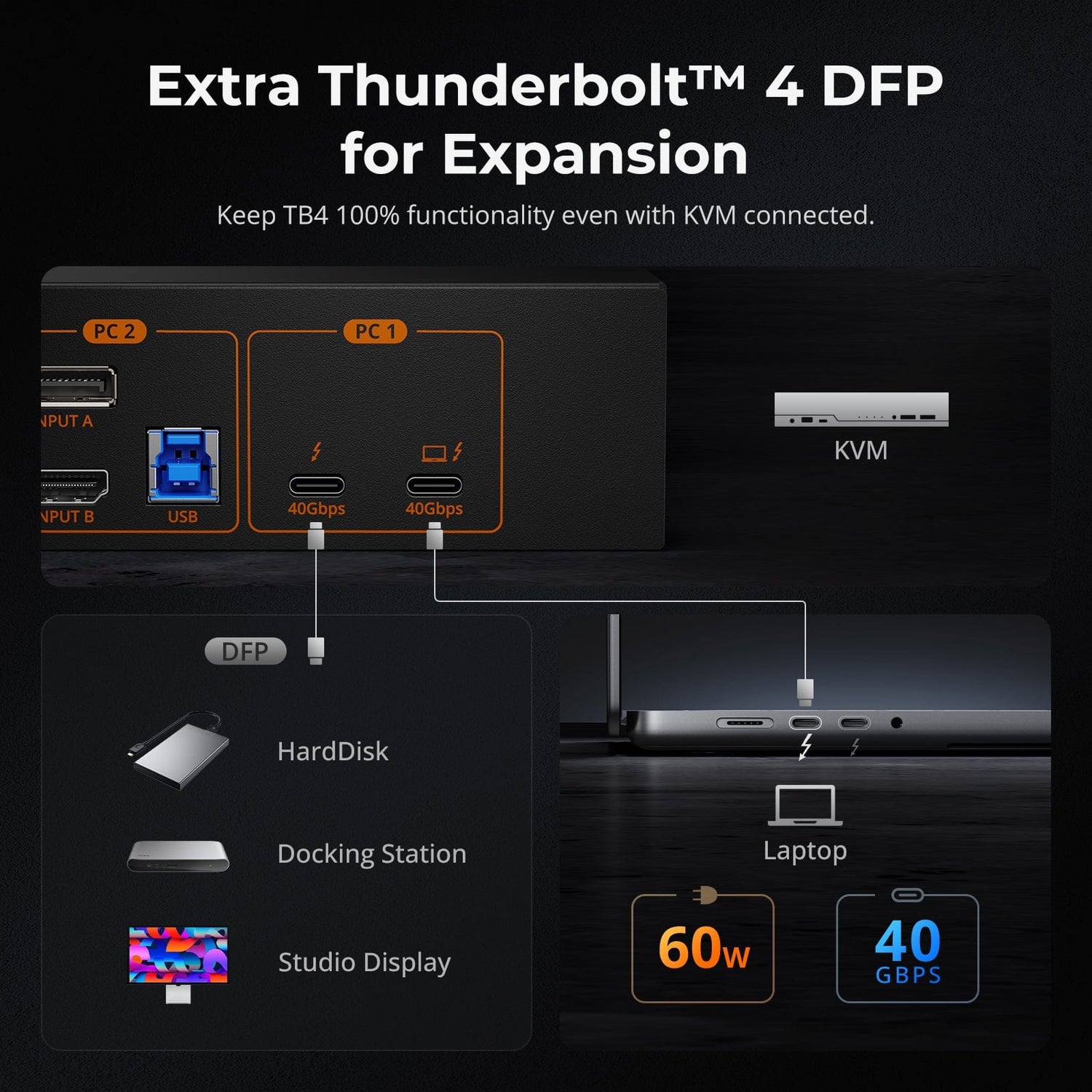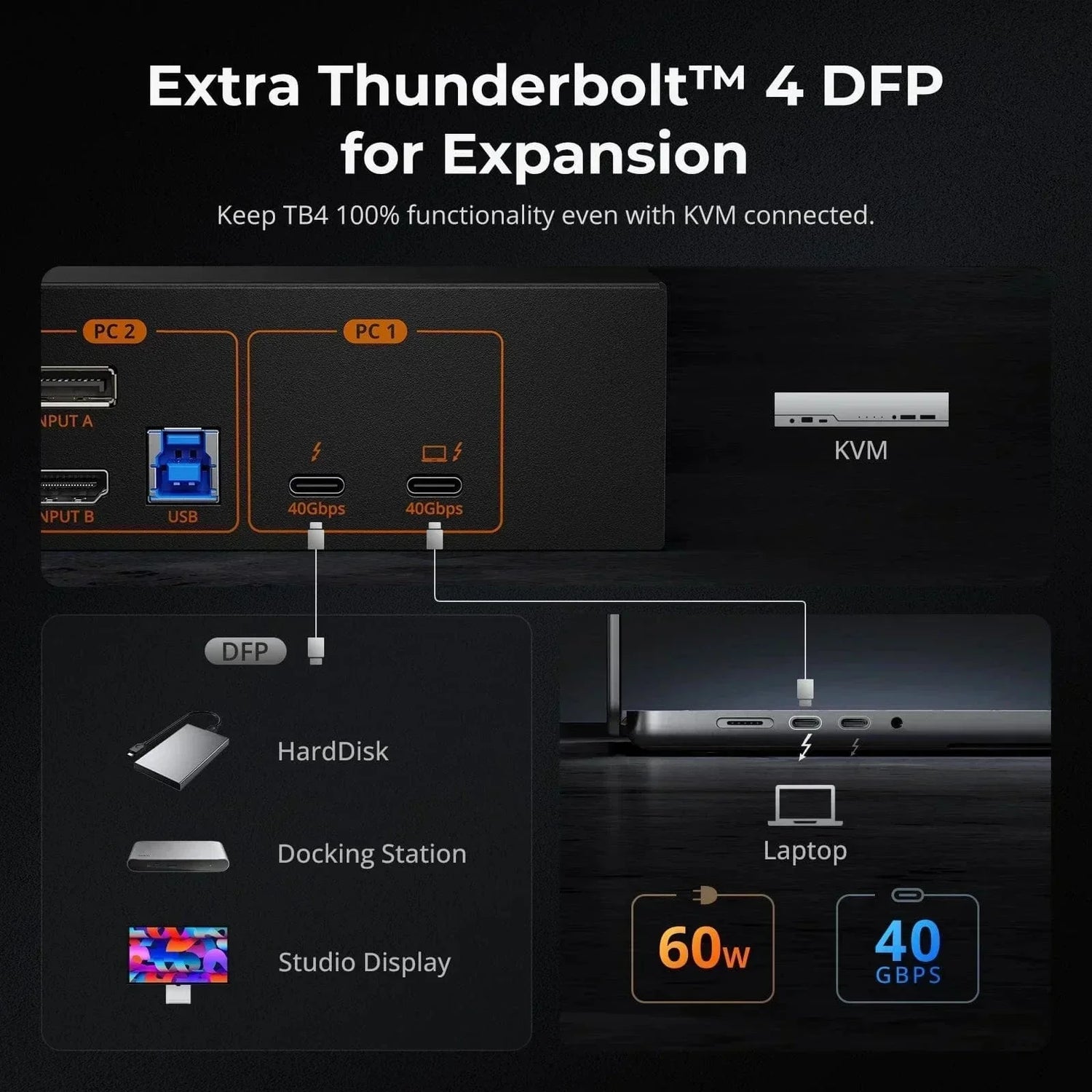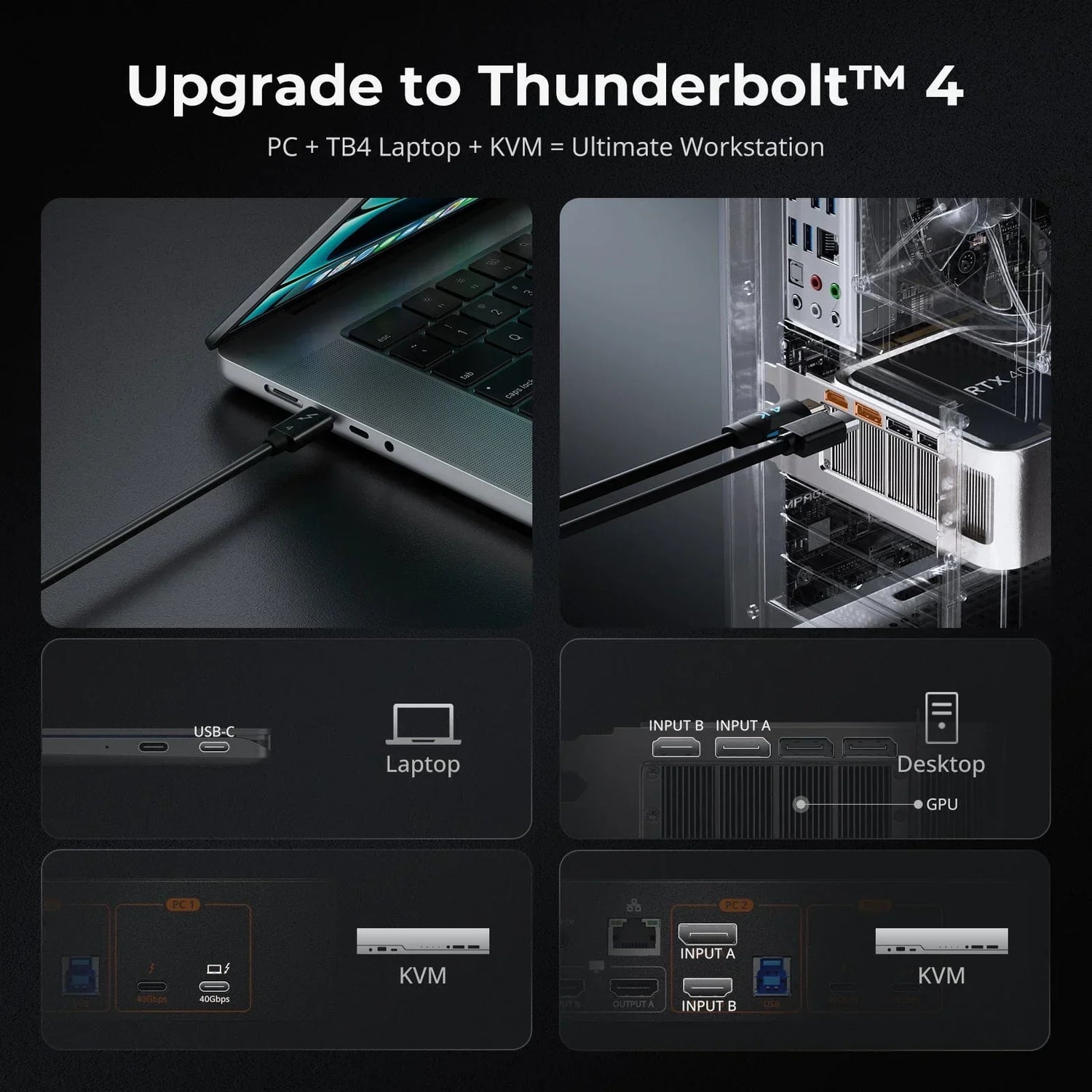In an era where high-speed data transfer and streamlined connectivity are essential for professional workspaces, Thunderbolt 4 has emerged as one of the most advanced interface technologies. Known for its ultra-fast bandwidth, versatile functionality, and broad compatibility, Thunderbolt 4 is rapidly becoming a central component of modern, high-performance desktop setups.
A Brief History of Thunderbolt
Since its initial release in 2011, Thunderbolt has undergone significant evolution. Jointly developed by Intel and Apple, it has continually improved its speed, functionality, and universality.
| Version | Year | Max Bandwidth | Key Features |
| Thunderbolt | 2011 | 10Gbps | Combined PCIe and DisplayPort |
| Thunderbolt 2 | 2013 | 20Gbps | Channel aggregation |
| Thunderbolt 3 | 2015 | 40Gbps | USB-C interface, power delivery |
| Thunderbolt 4 | 2020 | 40Gbps | Supports dual 4K or single 8K displays, 32Gbps PCIe, USB4 compatibility, stricter feature standardization |
Thunderbolt 4 improves upon Thunderbolt 3 by enforcing stricter minimum performance and feature requirements, ensuring every device meets high standards for compatibility and functionality.
Core Advantages of Thunderbolt 4
High Bandwidth: No More USB 3.0 Bottlenecks
Traditional USB 3.0 KVM switches offer a maximum bandwidth of 5Gbps, which often proves inadequate when using high-bandwidth peripherals like 4K cameras or external SSDs.
In contrast, Thunderbolt 4-enabled KVMs provide up to 40Gbps total bandwidth, eliminating lag and transfer limitations even when multiple demanding devices are in use. Each USB output port can support up to 10Gbps, ensuring stable and efficient performance for every peripheral.
One Cable, Multiple Functions: Data + Video + Power
Thunderbolt 4 integrates DisplayPort 1.4, USB4, PCIe 3.0, and Power Delivery protocols—meaning a single Thunderbolt cable can handle:
-
High-speed data transfer (storage, cameras, capture cards, etc.)
-
High-resolution video output (dual 4K@60Hz or single 8K)
-
Power delivery (up to 100W)
Broad Compatibility and Flexible Expansion
-
Backward compatible with Thunderbolt 3, USB4, and USB-C
-
Supports daisy chaining for peripherals
-
Cross-platform support for Windows and macOS
Thunderbolt 4 × TESmart HDC202-X24: A Game-Changer for Multi-Host Workstations
With multi-host and multi-device workflows becoming the norm, Thunderbolt 4 introduces powerful new possibilities for KVM applications. Take the TESmart HDC202-X24, for example—a high-performance KVM switch designed for dual-monitor setups and seamless host switching.
This KVM features two distinct input port groups:
-
One group with Thunderbolt 4 input + Thunderbolt expansion port
-
One group with HDMI + DP + USB-B ports
This combination enables flexible connectivity for a wide variety of host devices, without sacrificing bandwidth or functionality.
-
Dual-monitor output and multi-format signal input supported
-
40Gbps total bandwidth + 10Gbps per USB output port for seamless peripheral performance
-
Supports charging of the connected PC1 device (up to 60W), ideal for powering MacBooks and other Thunderbolt laptops
-
Cleaner cable management—reducing the need for external hubs or docking stations
The Thunderbolt expansion port is particularly useful for connecting high-bandwidth USB devices directly to PC1 (typically a laptop or Mac with a Thunderbolt port). Because this port connects directly to the host instead of routing through the KVM, it reduces Thunderbolt port occupation on PC1, improving efficiency and connectivity flexibility.
⚠️ Important Note: Some Mac models (such as the base model MacBook Air and 13-inch MacBook Pro with M1/M2 chips) only support one external display due to hardware limitations. If you own one of these models, even with the HDC202-X24, dual extended displays cannot be achieved. We do not recommend using this KVM with such devices. For full functionality, consider using higher-tier Mac models (e.g., M1 Pro, M2 Pro, or M3 Pro and above).
Thunderbolt 4 for the Future: Unified, Simplified, and High-Performance
Thunderbolt 4 is more than just a faster connector—it represents a move toward unified and simplified connectivity. As more devices adopt Thunderbolt 4 as a standard, users will enjoy fewer cables, more reliable connections, and improved productivity across all platforms.
Conclusion
Thunderbolt 4 is redefining what it means to “connect.” Products like the TESmart HDC202-X24 demonstrate how this technology can empower multi-host workflows, simplify high-performance setups, and unlock new levels of productivity. With 40Gbps bandwidth, intelligent port grouping, and thoughtful expansion design, Thunderbolt 4 KVMs are shaping the next generation of efficient, professional workstations—powerful, seamless, and minimalistic.




